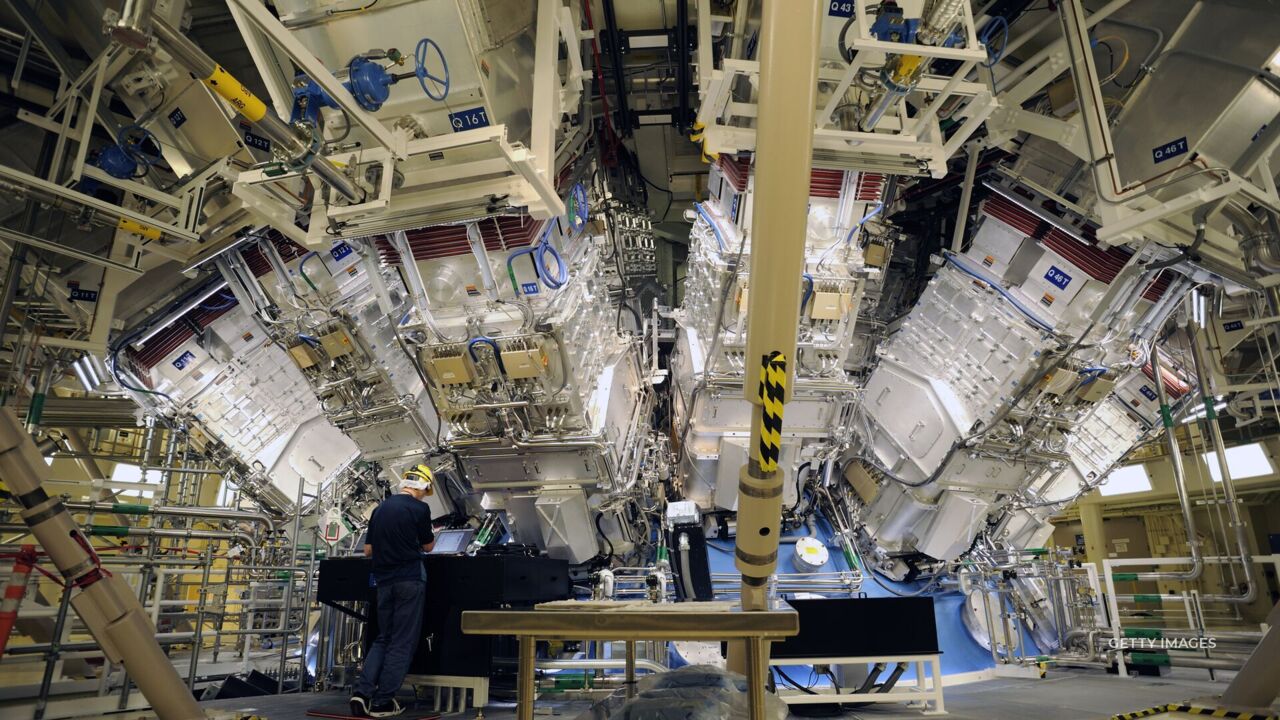
SINCE THE 1950’S SCIENTISTS HAVE BEEN WORKING ON WHAT’S BEEN CALLED THE HOLY GRAIL OF ENERGY GENERATION; NUCLEAR FUSION. FUSION WOULD BE AN ABUNDANT AND CLEAN SOURCE OF ENERGY, AND THIS WEEK, THE U.S. DEPARTMENT OF ENERGY IS ANNOUNCING A MAJOR BREAKTHROUGH IN FUSION TECHNOLOGY.
SCIENTISTS AT THE LAWRENCE LIVERMORE NATIONAL LABORATORY IN CALIFORNIA REPORTEDLY USED A NUCLEAR FUSION GENERATOR TO CREATE MORE ENERGY THAN WAS PUT INTO IT. ONCE THE EXPERIMENT’S RESULTS ARE VERIFIED, IT WILL SOLIDIFY FUSION AS A VIABLE ENERGY SOURCE.
NICK HAWKER IS THE CO-FOUNDER AND CEO OF FIRST LIGHT, A FUSION START-UP IN THE UK.
Hawker: We basically just need every clean source of energy we can get. We don’t have enough with just solar and wind and batteries. this is potentially the energy source which is going to fix the climate in the second half of this century.”
CURRENTLY, THERE ARE TWO WAYS TO CREATE NUCLEAR ENERGY. FISSION AND FUSION.
IN FISSION, THE PREDOMINANT METHOD IN USE TODAY, ENERGY IS CREATED WHEN HEAVY ATOMS ARE BROKEN DOWN INTO SMALLER ATOMS. IN FUSION, THE OPPOSITE HAPPENS. LIGHT ATOMS ARE TRANSFORMED INTO HEAVIER ATOMS TO RELEASE ENERGY. IT’S THE SAME PROCESS THAT HAPPENS INSIDE THE SUN
Hawker: Then what happens is that the fusion process itself takes over. It fuses a little bit, and that releases a little bit of energy. And then that heats the plasma, and then it fuses a bit more, and that releases more energy, and it heats the plasma more. So, you get this positive reinforcement effect.
FUSION IS CONSIDERED BETTER THAN FISSION, BECAUSE IT PRODUCES LESS RADIOACTIVE WASTE. THERE’S ALSO NO DANGER OF A NUCLEAR MELTDOWN WITH FUSION TECHNOLOGY. IF PERFECTED, NUCLEAR FUSION COULD PROVIDE THE PLANET WITH A VIRTUALLY LIMITLESS SUPPLY OF CLEAN, CHEAP ENERGY.
BUT UP UNTIL NOW, LAB EFFORTS TO CREATE A FUSION REACTION USED MORE ENERGY THAN WHAT WAS CREATED. THE EXPERIMENT OUT OF CALIFORNIA MAY HAVE JUST CLEARED THIS HURDLE.
SCIENTISTS USED A SERIES OF LASERS TO BOMBARD SUPERHEATED HYDROGEN ISOTOPES THAT WERE BEING HELD IN A PLASMA STATE. THE ISOTOPES FUSED INTO HELIUM, EMITTING A NEUTRON AND CARBON FREE ENERGY.
THE NATIONAL IGNITION FACILITY GENERATED 2.5 MEGAJOULES OF ENERGY OUTPUT OFF 2.1 MEGAJOULES OF INPUT, AN INCREASE OF ROUGHLY 20 PERCENT.
HAWKER’S TEAM AT FIRST LIGHT IS USING HIGH-SPEED PROJECTILES TO CREATE A FUSION REACTION. BUT HE SAYS THE BREAKTHROUGH USING LASERS, ONCE CONFIRMED, WILL IMPACT EVERY FACET OF THE FUSION INDUSTRY.
Hawker: This isn’t just some esoteric result from a weapons lab. This is a real moment for power generation, electricity generation technology.
IN ORDER TO BE A VIABLE ENERGY SOURCE, HOWEVER, NOT ONLY WILL THE NET AMOUNT OF ENERGY GAINED FROM FUSION NEED TO INCREASE, HAWKER SAYS WE NEED TO INVEST IN THE ACTUAL INFRASTRUCTURE REQUIRED TO GENERATE IT.
Hawker: there are plenty of designs which are efficient enough and have very good pathways to cost reduction, but they’re all at very small stages and haven’t had the investment that they need to get to that level. So, I think that’s the important thing here. By ticking off the physics, you’re onto that engineering journey of, ‘Okay, how do we get this to a power plant?’






